The Salem Witch Museum is a popular attraction in Salem that discusses the history of the Salem Witch Trials.
I first visited this museum about 10 years ago or so and recently decided to visit it again to write a review and see if they changed anything.
(Disclaimer: This post contains affiliate links. I earn a commission from purchases made through these links.)
Salem Witch Museum Overview:
The museum consists of two exhibits. The first exhibit is a half-hour presentation of several dioramas depicting scenes of the Salem Witch Trials that are lit up one by one while a recorded narration explains each scene. The second exhibit is a 10-15 minute guided tour of dioramas and wall displays about the history of paganism and the history of witch hunts.
When you first enter the building, you reach the ticket desk where you purchase a ticket and receive a flyer and a timed admission sticker for your tour.
You then wait in the lobby where there are displays on the wall discussing the history of the Salem Witch Trials, the historic sites in Salem associated with the trials as well as general information about witch hunts and witch finding methods often used in Europe.
When it is time for your tour, two large doors are opened and you are ushered into a large dark room. There are chairs lined up in the middle as well as on the sides of the room.
Tip: The best views of the presentation are from the seats in the center of the room so try to get one of these if you can.
On the floor near the center of the room is a large red illuminated circle that lists all the names of the Salem Witch Trial victims. On the walls all around the room are several large dioramas depicting various scenes of the Salem Witch Trials. The lights on each display are off when you first enter but you can make out the general figures and scenes depicted in them.
After a few minutes, the lights are turned out and a recorded narration starts. The narration continues for several minutes in the dark with no visuals to look at, which is a little confusing at first and I saw many of the visitors looking around the room trying to figure out what they were supposed to be looking at.
The narration was clearly recorded several decades ago because there is a large amount of tape hiss and white noise on the recording. It needs to be rerecorded and updated badly.
The narration, which is told in a dramatic and spooky voice, begins by setting the scene of 17th century Salem, which was a place where people faced a lot of hardship and lived in constant fear of everything from disease, Native-American attacks as well as the devil himself.
As a result, the narrator explains: “Fear was the climate of their lives” and this fear became one of the underlying causes of the Salem Witch Trials. During this part of narration the first diorama, an image of the devil with glowing red eyes, lights up in red light.
The next diorama is of people in a kitchen in a typical household in Salem Village. The narrator goes on to describe daily life in Salem Village which involved lots of hard labor, church-going and etc.
The next diorama is of a group of young girls gathered together in a house. The narrator begins to discuss life for the young girls in the village, particularly the girls that came to be known as the afflicted girls. He explains that young girls were very repressed in the colony and had very limited options and little control over their own lives. As a result, these repressed girls may have expressed their frustrations by acting out.
The narrator then mentions a few specific afflicted girls such as Ann Putnam, Jr. He explains that she was the daughter of Ann Putnam, Sr, who, due to a lot of deaths in her family, developed a fascination with communicating with the dead and may have urged young Ann to ask Tituba, a local slave, how to communicate with dead.
This, as far as I know, is completely fictional and comes from Arthur Miller’s play, The Crucible, in which Putnam, Sr, is obsessed with the afterlife and asks young Ann to seek Tituba’s help in communicating with the dead.
The narrator also states that Tituba would amuse the girls during the long winter days with fortune-telling tricks and magic. Although it is true that the girls themselves dabbled in fortune-telling techniques there is actually no evidence that Tituba was involved.
Another claim the narrator makes is that Tituba was black. Tituba’s race is actually unknown but most historians believe that she was Indian or of a race indigenous to South America where she was born. The narrator actually makes this statement about Tituba’s race twice during the presentation, later to drive home a particular point about racism in the trials.
The narrator goes on to explain that during the winter of 1692, the afflicted girls began suffering mysterious fits and a doctor was called to help figure out what was wrong with them. Unable to determine what was wrong, the doctor determined the girls were bewitched. During this point, the next diorama lights up, depicting the image of the doctor calling on a sick Betty Parris.
The narrator then says that the afflicted girls began to accuse people of bewitching them. A few accusations turned into a few more and then a witch hunt was underway. At this point, a silhouette of an angry mob of people is displayed on the wall.
The narrator goes on to discuss a few specific cases in the Salem Witch Trials while the next diorama, an image of accused witch Rebecca Nurse at home in bed, is displayed. The narrator tells the story of Nurse’s accusation and arrest. When the narrator begins to talk about Nurse’s trial and her verdict, a large diorama of Nurse in a courtroom is displayed on the back wall.
The next diorama is a figure of John Proctor standing alone with a little dog at his feet. The narrator goes on to explain that there were a number of Salem colonists who actually criticized the witch trials and says that John Proctor was one of these critics.
The narrator explains that John Proctor accused the afflicted girls of lying and warned that if people continued to listen to them they were going to accuse everyone of witchcraft, stating “they will make devils of us all,” which is exactly what happened.
The next few dioramas were of the accused witches in their small prison cells. The narrator described the victims experiences in jail, discussed how some people died in jail and how others confessed but couldn’t afford their jail fees and remained in jail.
There was a figure of Rebecca Nurse sitting in her cell, chained to the wall with heavy chains, a figure of John Proctor in his cell writing a letter to the Boston clergy in which he begged them to stop the trials, and a figure of Tituba standing in her cell.
The narrator explained that color black came up a lot during the trials, especially when the afflicted girls and accused witches mentioned a scary black man who they believed was the devil. The narrator stated that race was a big issue in the colony so it was no surprise that one of the first people accused in the trials, Tituba, was black (even though, like I said before, she wasn’t but she did have dark skin, which is the main point the narrator was trying to make.)
The next couple of dioramas were of Giles Corey. There was a diorama of Corey on his farm (although I could barely see it because it was behind me up on the wall which is the reason why you should sit in the seats in the center of the room.)
The narrator explained Corey’s story and described how he at first provided testimony against people during the trials but later, when he himself was arrested, refused to say anything more and even refused to enter a plea and was tortured as a result.
The next diorama was of Giles Corey lying underneath a board with heavy stones placed on top and a recorded voice reciting Corey’s famous line “more weight” when he was asked by Sheriff Corwin to enter a plea.
The next diorama was a very dramatic and somewhat scary image of a man standing on a platform under a tree about to be hanged. The narrator goes on to tell the story of George Burroughs, a local reverend who was convicted of witchcraft, and explained how Cotton Mather attended Burroughs’ hanging and even made a speech to the crowd defending the executions.
The next two dioramas were of Reverend Green and Ann Putnam, Jr. The narrator goes on to discuss Salem after the witch trials and says that one of the afflicted girls later admitted that the girls had only accused people for sport. This is completely false. None of the girls every admitted that. I think this is yet another reference to The Crucible, in which one of the girls admitted that she and the other afflicted girls had lied.
The narrator then goes on to explain that years later Ann Putnam, Jr, issued a public apology, in which she admitted that she had made mistakes during the trials, and had Reverend Green read the apology in church. The narrator then goes on to recite the apology.
The last diorama is of the red devil again while the narrator explains the lessons learned from the Salem Witch Trials. The narrator states that the accused witches were victims of fear, hysteria and scapegoating.
He then states that the events of the witch trials never happened again and that we “gave way but once to our fears” which is odd because the message in the second exhibit in the museum is that witch hunts are still happening around the world every day. Again, I think the recording is very outdated and needs to be updated.
After the presentation, the group is split into two and one half goes into the second exhibit while the other half takes a brief intermission, conveniently, in the museum’s gift shop.
The gift shop is, of course, full of the kitchiest and tackiest witch-themed gifts, known in Salem as witch kitch, you could possibly think of. There are witch dolls, witch mugs, witch knick-knacks, magic wands, witch t-shirts, witch stickers and etc.
Among all this stuff are a few items related directly to the witch trials which I found particularly distasteful, one of which was a reproduction of the Salem Witch Trials arrest warrants with a blank spot so you can fill in your own name.
After milling around the gift shop for about 10 minutes or so, you are then led into the second exhibit which is called Witches: Evolving Perceptions. This exhibit is a guided tour that explores the perceptions of witches throughout history and modern culture.
When entering the exhibit, the tour guide takes you to the first piece in the exhibit which is a collection of images of witches from pop culture. The tour guide explains how witches have been portrayed in pop culture over the years and then presses a button to play a recorded narration discussing the topic even further.
The second piece in the exhibit is a diorama of a stereotypical green witch flying on a broom over a small town. The tour guide explains that accused witches were often women who worked as healers during the middle ages and were scapegoated and criticized for their work. The tour guide then presses a button to play another recorded narration about the topic.
The next piece in the exhibit is a giant timeline on the wall displaying the connections between Western History and Pagan History. The timeline is really interesting but the tour guide only stops to explain it very briefly and then ushers you past it before you can really read most of the content and understand its message.
The next piece in the exhibit is a diorama of a male and female pagan. The tour guide presses a button to play a recorded narration about the history of pagans and Wicca and how they came to be feared and persecuted over time.
The piece about this history of pagans and Wicca is highly informative and very progressive but at the same time, it is not really relevant to the Salem Witch Trials. There may have been a few practitioners of English folk magic in Salem at the time of the trials but there weren’t any pagans or Wiccans so this piece seems out of place.
There is a growing interest among the general public in the history of witchcraft and Wicca, and Salem has become a mecca for anyone interested in the occult, so it seems as though the museum is catering parts of the exhibit specifically to this crowd to get more people in the door. It’s not that I have a problem with the exhibit, it’s just not relevant to the witch trials.
The last piece in the exhibit is a display on the wall explaining the history of scapegoating that led to events like the Salem Witch Trials. The tour guide explains that there is a formula to a witch hunt that can explain other scapegoating events such as the McCarthy hearings in the 1950’s, the internment of thousands of Japanese-Americans during WWII and the AIDS epidemic which led to the scapegoating of the gay community in the 1980s.
The formula is: fear + trigger = scapegoat. The display on the wall states that the variables in the Salem Witch Trials were: fear of the devil + Dr. Grigg’s diagnosis of witchcraft = 150 accused witches in Salem.
I completely agree with this formula but I would argue that the trigger was Tituba’s confession, not Grigg’s diagnosis. Doctors had diagnosed plenty of people in the Massachusetts Bay Colony of being bewitched before and there were many other witch trial cases before the Salem Witch Trials.
The Salem Witch Trials themselves would probably not have turned into the massive witch hunt it became if it hadn’t been for Tituba’s confession that she was a witch and was working with the Devil in Salem along with other witches. This confession confirmed the colonist’s greatest fears that the Devil had infiltrated Salem and prompted them to look for the other witches Tituba mentioned.
I really liked this piece in the exhibit very much and I think it’s very progressive and educational. My only complaint is the tour guide spends only a few minutes on this piece and then ushers you out of the exhibit before you really get to process it and understand it.
As a result, I think the message is lost on a lot of the visitors. I just wish they would spend a little more time on it and maybe take questions from the visitors to help them understand it a little better.
Another interesting piece you can see in the second exhibit, but the tour guide doesn’t talk about it or even point it out, is one of the original header beams from the dungeon of the old Salem jail where they kept the accused witches.
I had no idea they had this and was really surprised to see it. Artifacts and objects from that time period are rare and hard to come by so it is quite a treat to see it.
Instead of being prominently displayed in the exhibit, the beam sits by the front door of the exhibit. Perhaps they thought that this would be a place where more people would see it but because the tour is guided, the guide just walks you right past the beam without mentioning it. As a result, most people end up walking right past it without even noticing it.
The Salem jail, which was located on the corner of Federal Street and St. Peter street, was remodeled into a house during the 19th century and then torn down in 1956.
The old dungeon underneath the prison, where the accused witches were kept, was uncovered by construction workers in 1957 and the wooden beams from the dungeon were donated to the Peabody Essex Museum. It seems that one of the beams eventually made its way to the Salem Witch Museum and another one is located at the Witch Dungeon Museum.
The other beam at the Witch Dungeon Museum is one of that museum’s main attractions. Visitors of the Witch Dungeon Museum are encouraged to rub the beam for luck and often take photos of themselves with it. The beam at the Salem Witch Museum seems to be largely ignored for some reason.
My Verdict on the Salem Witch Museum:
My main complaint about the museum is the visuals and audio during the first exhibit are a little outdated and are low quality. The narration needs to be rerecorded on modern audio equipment and updated with new information.
At various points in the presentation, I heard people in the audience snickering and laughing. This annoyed me at first but then I realized that some parts of the presentation are a little ridiculous and they kind of had the right to laugh.
One such part is a recording of a one of the accused women wailing which ends up sounding oddly erotic and prompted a few stifled laughs from the visitors. The dramatic voice of the narrator also gives the whole presentation a comic overtone and makes it hard to take it seriously.
Although the exhibit allows children, I think some of the scenes, particularly the scene of the red devil and the hanging scene at the end, are little too scary for young children and many visitors often complain that children in the audience often begin crying during the presentation and ruin the presentation.
I love the museum’s overall message about fear and scapegoating and I wish more people would talk about this issue. As many historians and writers have pointed out over the years, witch hunts continued long after people stopped believing in witches.
It’s an unpopular topic to talk about because people would like to believe that our society has evolved and moved past such things, but that is unfortunately not true. It’s a topic that needs to be discussed and fortunately the Salem Witch Museum isn’t afraid to say it.
As lackluster as the presentation can be, the museum does a fantastic job of educating the public about the causes of the witch trials and of scapegoating in general and I find their stance on the subject to be very brave.
Overall, although the presentation is a bit tacky and needs some updating, I would still recommend visitors check out the museum for a couple of reasons. One reason is that it does provide a pretty thorough overview of the events of the witch trials.
The trials are very complicated and there were a lot of people involved and a lot of events that took place during them. The museum does a pretty good job at summing it all up and giving you the general idea of what happened and why (even if it does get a few small details wrong here and there.)
There aren’t really a lot of other attractions in town discussing the actual history of the trials in depth like this (besides the guided historical tours) so it is a pretty good introduction to the trials.
Another reason I still recommend the museum to visitors it is solely because the museum itself has become a part of quintessential visit to Salem. It’s on every tourist’s list of things to see in Salem and it’s hard to say you’ve really seen Salem without visiting the museum.
I’ve read complaints in other reviews of the museum that the name of the attraction is misleading because it isn’t a museum at all and is instead a show. I think it’s just as informative as a museum and I actually like that it’s a show because it’s more engaging than a regular museum.
The show helps you learn and process a lot of complicated information in one sitting. It’s a good introduction to the Salem Witch Trials for people who know nothing about it. If you already know a little about the trials, it won’t really give you any new information.
Tip: Another reason to visit the museum is when you purchase your ticket, you get a flyer and an admission sticker that gives you discounts at over 18 other attractions in Salem and Boston.
These attractions include the Salem Witch House, several of the Salem historical tours, various restaurants and eateries in Salem, discount tarot readings at various shops in Salem including Crow Haven Corner, Omen and Hex as well as discounts on attractions outside of Salem like the Boston Duck Tours, Essex River Cruises and the Marblehead Museum.
So if you plan on visiting Salem and seeing the sites, visit the Salem Witch Museum first so you can pick up this flyer and sticker and take advantage of these discounts.
Coupons, Discounts and Passes:
You can also save money on Salem Witch Museum tickets themselves through discount tickets and coupons offered by various companies.
One way to save money is if you purchase an e-ticket to the museum online, through a tour company called Trusted Tours & Attractions.
Another way is if you purchase the Go Boston Pass you’ll get access to the Salem Witch Museum and over 41 other attractions in Boston, Concord, Plymouth and Salem, including the House of Seven Gables and the Peabody Essex Museum, for a flat fee for a one-day card.
When you purchase one of these e-tickets or passes online, to get your flyer and admission sticker simply go the front counter at the museum and present your e-ticket or Go Boston Pass to check in.
Just a heads up though, if you purchase these e-tickets or passes in October when the lines are long, the museum staff says that they can’t guarantee admission that day (since the shows often sell out during that time of year) and they don’t allow you to bypass the pay line where you have to check in and pick up your admission sticker/flyer.
History of the Salem Witch Museum:
Another interesting thing about the museum that you don’t learn while you are there is that the land that it sits on has direct ties to the Salem Witch Trials and is actually one of many historical sites in Salem.
At the time of the trials, Reverend John Higgingson, the senior minister at Salem, owned the property that the museum now sits on. Higginson lived in a house nearby, on what is now Essex Street, with his daughter Ann Higgingson Dolliver.
Ann Higginson Dolliver was accused of witchcraft in June of 1692 but confessed to the crime and was later released. Rev. Higginson himself also provided testimony in defense of accused witch Sarah Buckley.
The land was later purchased by the East Church who, sometime between 1844-46, built the Gothic Revival-style church that the museum is now housed in.
In 1972, the new property owners, Holly and Tom Mulvihill renovated the church and opened the Salem Witch Museum there. Several news articles about the museum that I found online state that the museum was built to appeal to new tourists flocking to Salem after the publication of The Crucible, in 1953, and the airing of the “Salem Saga” episodes of Bewitched in 1970.
Salem Witch Museum:
Website: www.salemwitchmuseum.com
Address: Salem Witch Museum, 19 ½ N Washington Square, Salem, Mass
I hope you found this review of the Salem Witch Museum helpful. Have you been to the Salem Witch Museum recently or in the past? Let me know what you think of the museum by leaving a comment below!
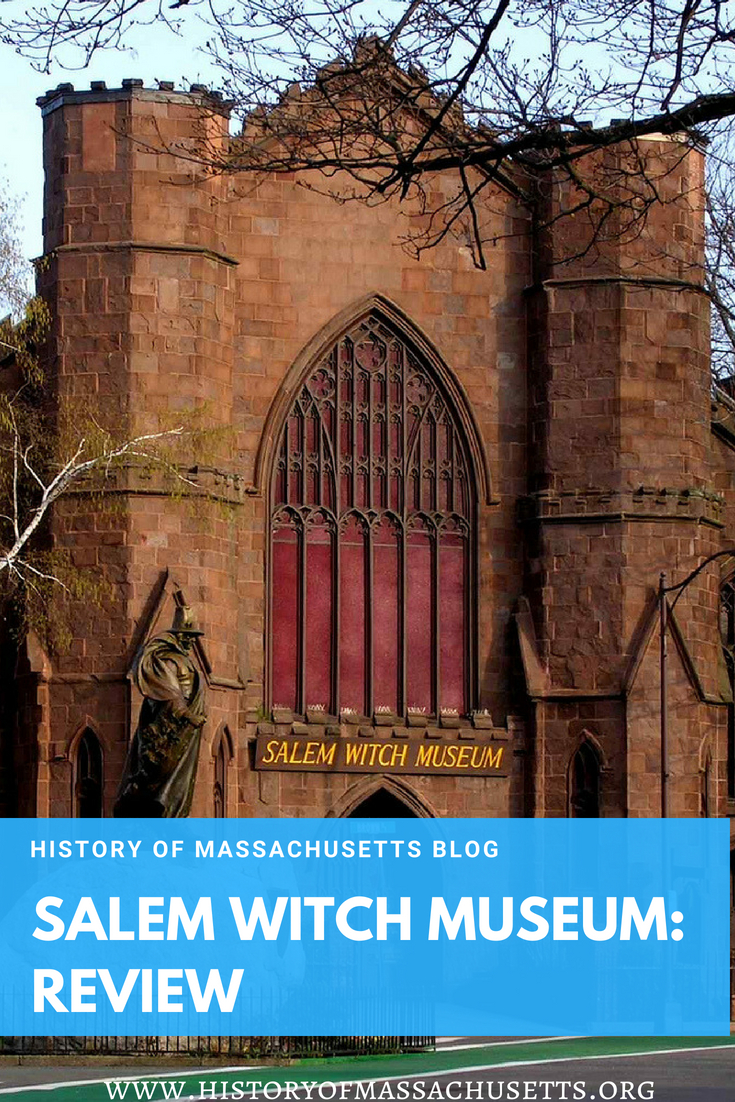


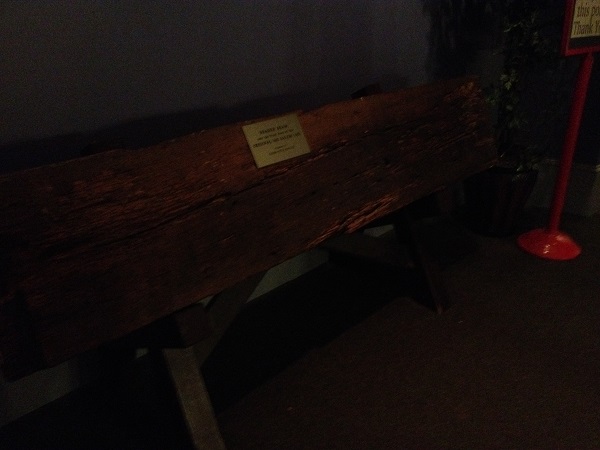
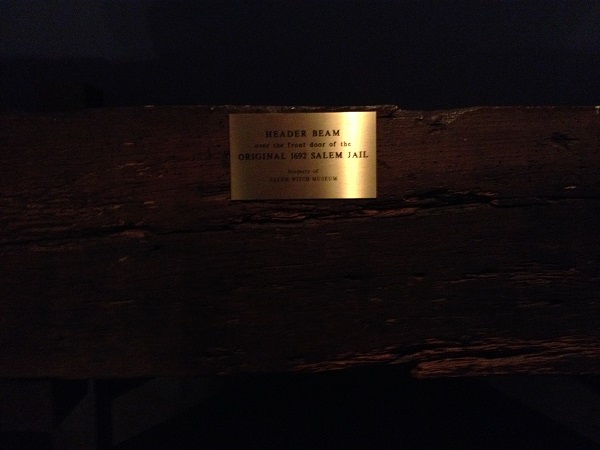
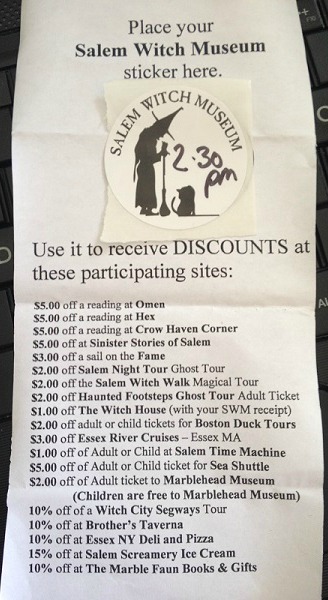
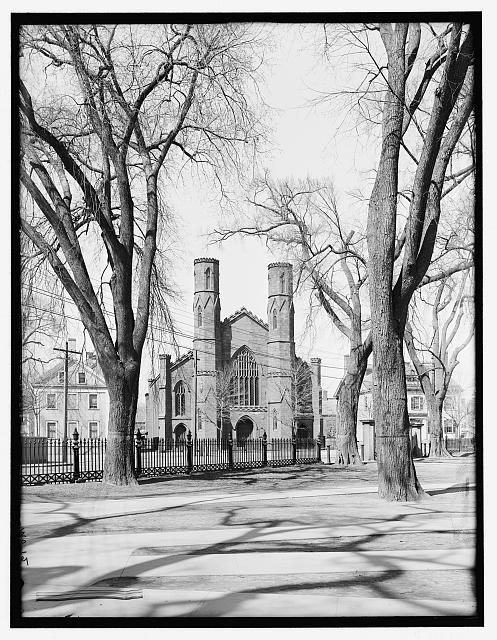
I was at that Witch Museum in August 1990, but we had to sit on the floor while watching the brief play, acted out about the trials.I wondered why the building looked like a church.I agree with all you wrote.Salem is beautiful, especially in Fall, and I always wanted to see it as a child, even.So I got to at age 29! I thought it would seem weird, but cool, to live there and go to school there.-Michelle.